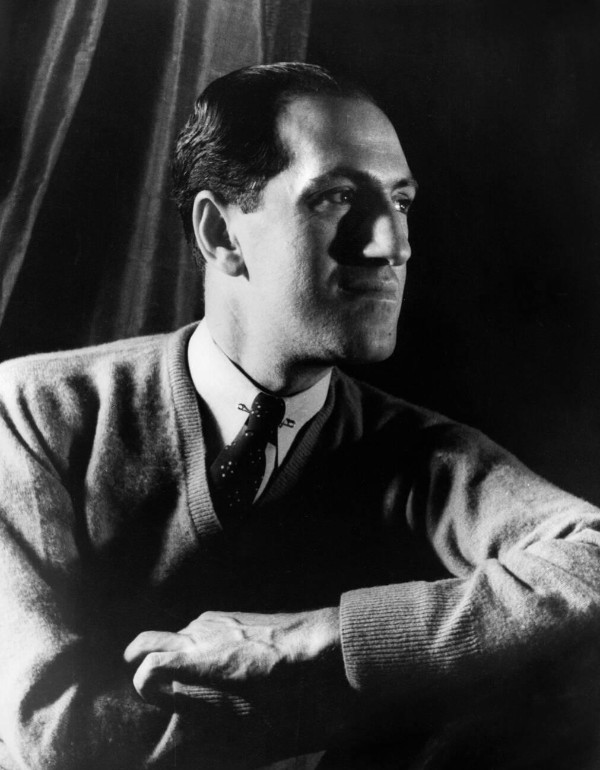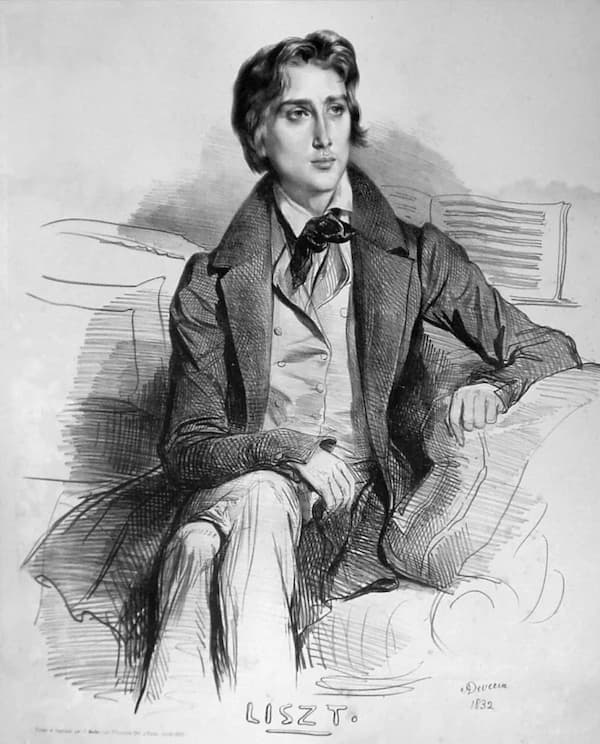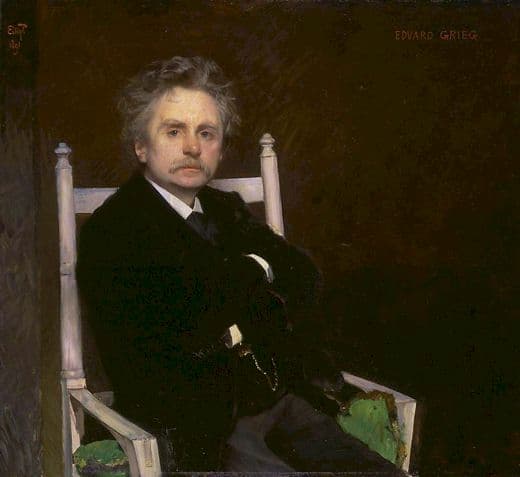There’s something thrilling about the opening of a great piano concerto. The big instrument gets rolled onstage; the soloist and conductor stride out to applause; the pianist sits and raises their arms and nods to the conductor to begin.
Today, we’re looking at piano concerto openings that have a claim to be among the best: excerpts that are particularly striking, surprising, or spellbinding.
Of course, when it comes to ranking classical music, there is no such thing as an objective list. Today, we’ve made some subjective calls and made a countdown list in reverse order.
Keep scrolling to find out which piano concertos we think have the best openings, and which concerto nabbed the number one spot.
10. Robert Schumann: Piano Concerto in A minor
The first movement of Robert Schumann’s piano concerto began life as a Phantasie in A minor, which he wrote over the course of four days in May 1841.
He had just married Clara Wieck, one of the great pianists of her generation, and the work was clearly inspired by her.

Robert and Clara Schumann
Clara was so taken by the Phantasie that she urged him to write two more movements to make it an official piano concerto. He did so in 1845, and she premiered the whole concerto in December 1845.
The concerto begins with a bold, unsettled statement by the soloist, followed by a sympathetic response by the orchestra.
The soloist answers the orchestra in a dreamy way, but she soon begins to brood. And with that, listeners are off to the races.
9. Saint-Saëns: Piano Concerto No. 2 in G minor
This concerto dates from 1868, the height of the Romantic Era, so you might expect it to begin with a lush, Romantic flourish.
Instead, Saint-Saëns begins with a jaw-dropping solo cadenza that is clearly a tribute to Baroque Era master Johann Sebastian Bach.
This unexpected homage makes for one of the most arresting openings in the entire piano repertoire.
After the soloist pounds out the gutsy tribute to Bach, the orchestra steps in with a dramatic, almost operatic response. The piano replies, beginning a dialogue between the two forces.
The work does eventually ease into a more Romantic language, but it does so while retaining a kind of aloof Baroque aesthetic…making for a fascinating tension.
8. Gershwin: Rhapsody in Blue
We’re cheating a little bit by including this one, since, technically speaking, Gershwin’s Rhapsody in Blue isn’t a concerto. However, its opening is so iconic that it had to go on this list.
Why? That opening clarinet glissando. (In fact, that entire opening clarinet solo is unforgettable.)
Amazingly, this iconic moment in music history came about by accident.

Portrait of George Gershwin
Charles Schwartz writes in his 1979 biography:
As a joke on Gershwin…[Ross] Gorman [the clarinettist at the premiere] played the opening measure with a noticeable glissando, “stretching” the notes out and adding what he considered a jazzy, humorous touch to the passage. Reacting favorably to Gorman’s whimsy, Gershwin asked him to perform the opening measure that way…and to add as much of a “wail” as possible.
This delightful accident set the stage for a work that melded the long-standing traditions of European art music with the fresh energy of American jazz.
7. Mozart: Piano Concerto No. 20 in D-minor
Mozart wrote 27 piano concertos. Only two were written in a minor key. This was the first.
This music here sounds theatrical: like the overture to an opera set on a windswept island.
As per Classical Era convention, the soloist doesn’t enter until over two minutes in. The solo part calls for a pianist to meld restraint with storminess.
6. Liszt: Piano Concerto No. 1 in E-flat Major
Franz Liszt began writing his first piano concerto in 1830, when he was 19. According to scholars, its main themes date from this time. However, he didn’t finish and premiere it until 1855.
The opening features a bold, sassy statement in the orchestra, followed by a mind-boggling display of virtuosity by a snarling solo pianist.
Legend has it that Liszt assigned sarcastic lyrics to this opening theme: Das versteht ihr alle nicht, haha! (“None of you understand this, haha!”).

Franz Liszt
This opening theme recurs throughout the work. It’s no wonder that Béla Bartók called the concerto “the first perfect realisation of cyclic sonata form.”
5. Brahms: Piano Concerto No. 1 in D-minor
The opening to Brahms’s first piano concerto has a shocking gravity to it, especially for a composer in his early twenties.
But despite his youth, Johannes Brahms had already been through a lot. One of his mentors, Robert Schumann, had recently attempted suicide by jumping into the Rhine. After he was rescued, Schumann agreed to move into an institution for his and his family’s safety.
Many people believe that the falling sensation depicted in the opening to this concerto is a reference to Schumann’s plunge into the water and the depths of incurable mental illness.
As if all that weren’t enough, Brahms was also falling in love with Robert’s wife, Clara, who was pregnant with her eighth child, and fourteen years Brahms’s senior. The two would never marry, but would be close soulmates and creative partners for decades to come.
The tragedy and trauma of witnessing Robert’s illness, Clara’s devastation, and his own doomed love are immediately obvious in this concerto’s opening moments.
4. Beethoven: Piano Concerto No. 4 in G-major
On its own, this unassuming opening might not seem particularly striking.
But here’s some important context: at the time of this concerto’s composition in 1805-1806, it was not standard for a soloist to begin a concerto.
Beethoven‘s crafting of an opening to a concerto where the orchestra didn’t state the theme first was revolutionary.
Breaking this rule encouraged later composers to create several of the other great concerto openings on this list.
3. Tchaikovsky: Piano Concerto No. 1 in B-flat minor
This concerto begins with a short but monumental French horn call.
Next, the soloist accompanies a lush, wistful string theme with massive chords. The instrument practically plays a percussive role here.
Finally, the soloist takes the spotlight in a commanding solo cadenza, creating an intimidating aura of grandeur.
2. Rachmaninoff: Piano Concerto No. 2 in C-minor
Countless classical music lovers have been drawn into the art by the dark, hypnotic opening of Rachmaninoff’s second piano concerto.
The opening chords in the solo part peal out like bells and lead to an equally dark, lush theme in the strings.
In under sixty seconds, Rachmaninoff creates a swirling world of passion and heartbreak.
Even today, this opening remains one of the most cinematic moments in the entire piano repertoire. (And, in fact, this concerto has been used in a number of classic films over the decades.)
But in the end, there can only be one greatest piano concerto opening of all time, and today, on this very subjective list, the prize is going to:
1. Grieg: Piano Concerto in A-minor
Everything about this opening is unforgettable:
- The menacing, thunderous timpani roll.
- The heroic cascade of chords from the soloist, equal parts tragic and terrifying.
- The orchestra coming in with an unforgettable, folk-inspired melody.
It’s the perfect opening to a piano concerto.
Interestingly, Grieg was inspired by the first concerto on this list: Robert Schumann’s. Notably, it’s in the same key and features similar gestures in the opening…bringing this list full-circle!

Edvard Grieg, 1891
What’s your favourite piano concerto opening?